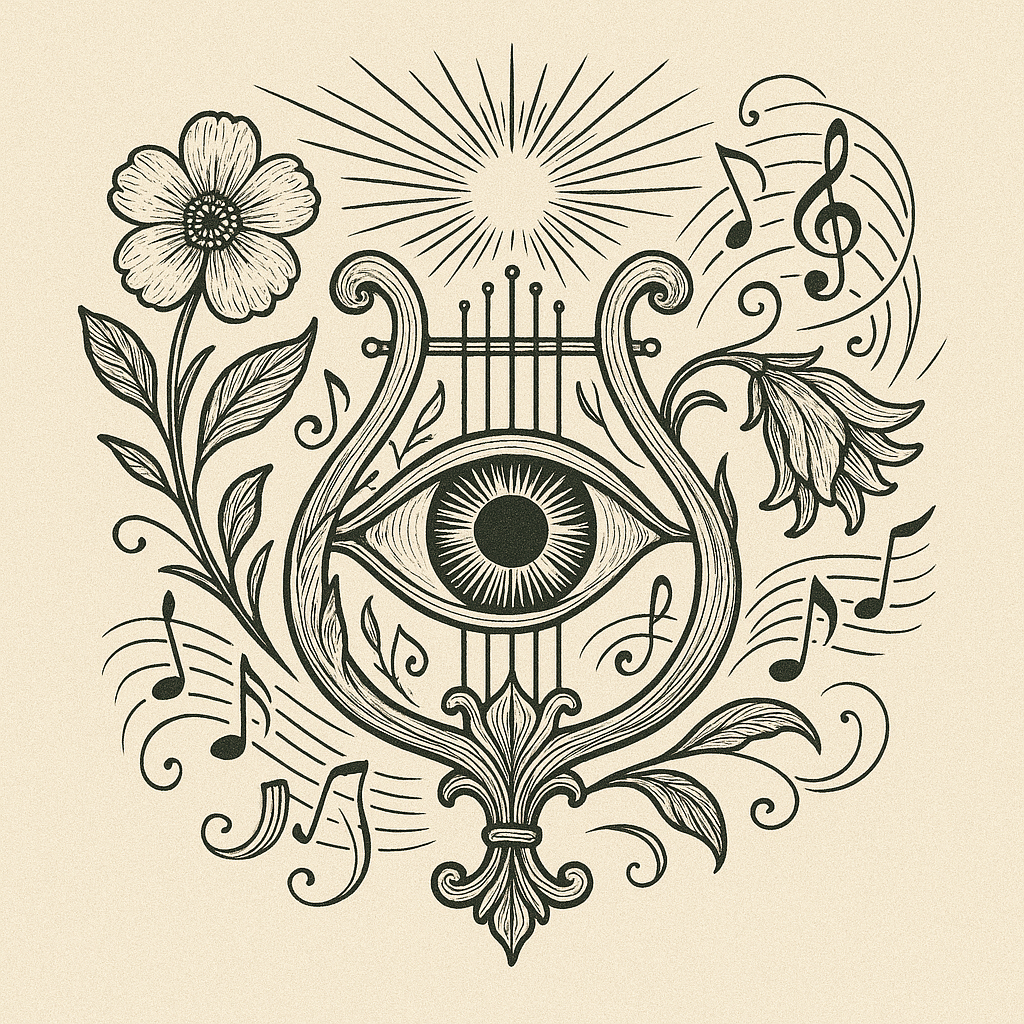Marawae
God of Beauty, Music, and the Arts
Description of the Church
The Church of Marawae, devoted to the god of beauty, music, and the arts, is unlike many traditional religious institutions. Rather than rigid hierarchy or dogma, it is a living, breathing movement—part spiritual order, part cultural guild, and part philosophical salon. Its influence flows through cities and courts, workshops and amphitheaters, and even among traveling troupes and underground ateliers.
Core Beliefs
- Art is divine: Every act of creation brings mortals closer to the divine spark.
- Beauty is sacred, but subjective; it need not conform to tradition, only evoke genuine feeling.
- Inspiration is a form of worship, and each artist is both priest and pilgrim.
- Suffering, joy, and love are all worthy subjects—emotion is the language Marawae speaks through.
- The gods themselves were born of story and song; thus, artists wield a power akin to creation.
Religious Structure
- The Opus (the central order): A loosely centralized ecclesiastical body in larger cities that coordinates grand performances, major festivals, and theological guidance. Not rigidly authoritarian—more like an artistic collective with spiritual oversight.
- The Exemplar: Spiritual and artistic head of the Church, chosen not by election but by acclaim—the Exemplar is someone whose work has profoundly moved followers. Their role is to inspire, not to rule.
- Keepers of the Veil: Senior clergy and curators of the Church’s greatest works (paintings, compositions, masks, plays, etc.). They safeguard Marawae’s sacred relics, many of which are said to be god-touched.
- Visionaries: Traveling preachers, artists, and musicians who spread the faith through performance and teaching. Often indistinguishable from wandering bards, but deeply versed in the spiritual dimensions of art.
- Choral Orders: Local temples may specialize in particular arts—poetry, sculpture, dance, or theater. Each is led by a Master of Form, who mentors apprentices and leads rituals.
Rituals and Practices
- The Dawn Rehearsal: A morning rite where initiates sing or perform in solitude, believing the first note of the day calls Marawae’s attention.
- Living Offerings: Instead of blood or coin, worshippers leave behind works of their own creation—hung in temples, performed in sacred halls, or written into the walls.
- The Masked Midsummer: A festival where followers wear beautiful masks representing inner truths and perform improvised plays. The best performance becomes canon in the Church’s myth-cycle for the year.
- The Quiet Canvas: A funeral rite in which a person’s life is painted as a mural or told through poetry, symbolizing their return to Marawae's eternal gallery.
Followers
- Artists, of course—painters, dancers, sculptors, actors, bards, playwrights.
- Philosophers and aesthetes who believe beauty is a path to transcendence.
- Lovers and dreamers, those who believe the world can be changed through emotion and expression.
- Rebels who use performance to challenge tyranny or monotony, believing that Marawae abhors dullness and cruelty alike.
Temples
Temples of Marawae are living museums and theaters, filled with motion, sound, and color. Each is unique—designed by artists, maintained by inspiration, and ever-changing. Silence is rare, and laughter is common.
Conflict and Controversy
Fundamentalist splinters claim that only “traditional” forms of art are truly sacred, while others embrace chaos, avant-garde, and even magical expression.
Vohrmazh’s cults view Marawae as indulgent and soft—while some Visionaries believe Vohrmazh represents the necessary void that frames beauty.
The Church of Aergethyr (law) often clashes with Marawae’s more subversive branches, especially when performances spark dissent.
Relationships to other gods
Central Architect: As god of the arts, Marawae is thought to be revered (or resented) by the other gods as the one whose worship gave them form. It has been suggested that Marawae was the first deity imagined.
Relationship with Rii-Ella (knowledge): Collaborative, sometimes contentious. Marawae births ideas through beauty and emotion, while Rii-Ella codifies them into permanence. They argue about which is truer: inspiration or preservation.
Rivalry with Elustra (tricks): Elustra mocks Marawae’s seriousness, creating parodies of divine stories that twist worship in strange directions.

Symbol: Design: A lyre shaped like an open eye, with five strings stretching from the brow to the cheek. Encircling the lyre is a wreath of ink-brushed flowers, half in bloom, half fading. Behind it, faint lines radiate like sunlight or soundwaves.
Meaning: The eye symbolizes vision—artistic insight, perception, and inner truth. The lyre represents music and harmony across disciplines. The flowers show the ephemeral nature of beauty—ever-changing, never lasting. The radiating lines evoke both sunlight and song, illustrating how Marawae’s gifts ripple outward into the world.
This symbol is commonly rendered in flowing, ornamental linework. Artists may wear stylized pendants of the lyre-eye or paint it in their studios to invoke inspiration.



Comments